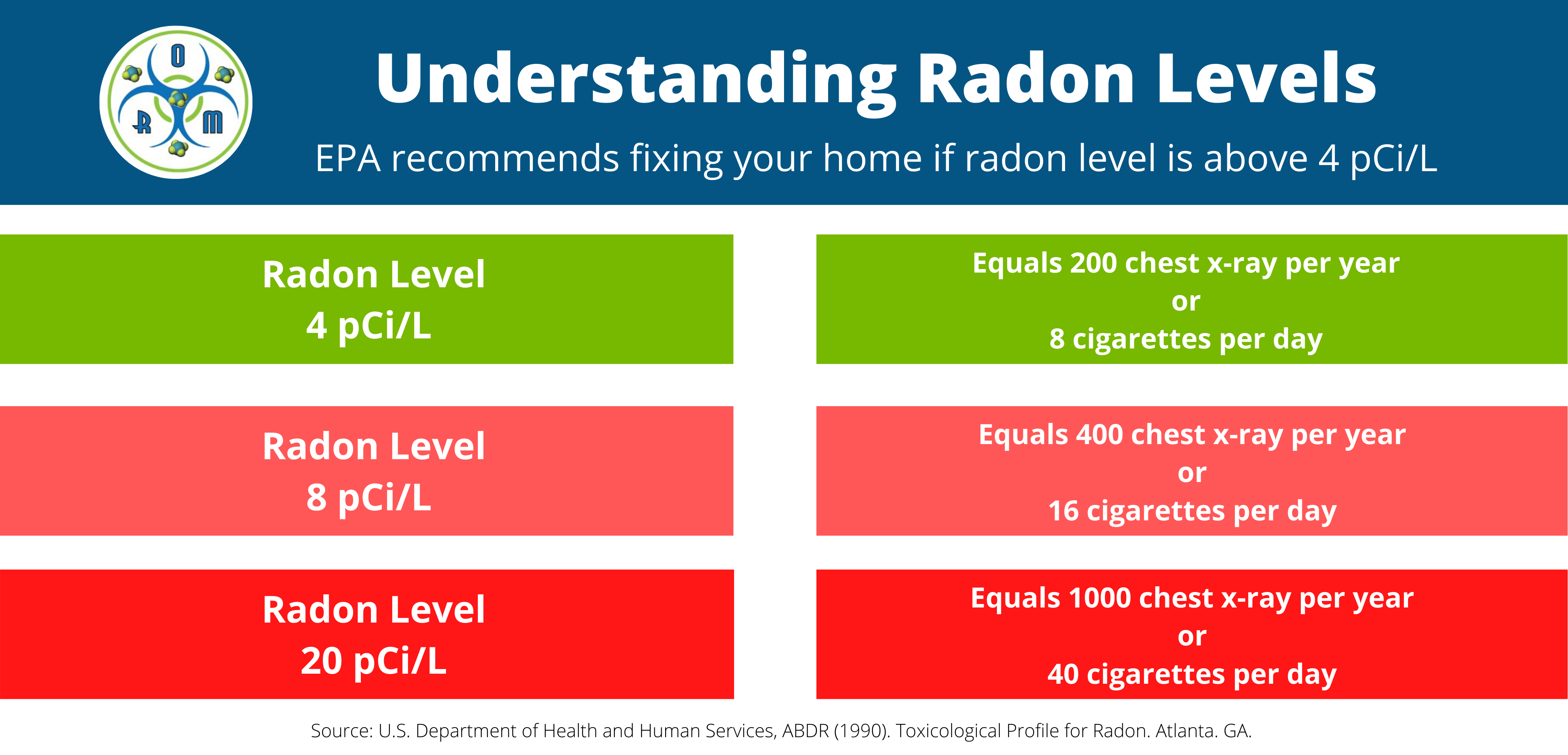Web if the radon level of your home is 4 pci/l (picocuries per liter) or more, however, it is considered high. Nonetheless, continuous monitoring is prudent. Radon is a radioactive gas that is naturally released in the air from rocks and soil. One in 15 homes across the country tests positive for dangerous levels of radon, an invisible, odorless gas that causes lung cancer. Concentrations below 1.3 pci/l are considered safe radon levels, necessitating no immediate action.
Radon can get into homes and buildings through small cracks or holes and build up in the air. Web radon is an odorless, invisible, radioactive gas naturally released from rocks, soil, and water. The average concentration of radon in outdoor air is.4 pci/l or 1/10th of epa's 4 pci/l action level. Radon is a radioactive gas that is naturally released in the air from rocks and soil. Read a citizen's guide to radon.
Web you've tested your home for radon as we keep urging you to, and, surprise! You can find one through your state radon office. It can be found in the air outside and can get inside buildings and homes, where it can build up. Radon is a naturally occurring radioactive gas that can cause lung cancer. Web an average person receives a higher radiation dose from the radon levels than their combined exposure to all other radiation sources.
Web you've tested your home for radon as we keep urging you to, and, surprise! You discover your levels are dangerously high. You can’t see or smell radon. Nonetheless, continuous monitoring is prudent. One in 15 homes across the country tests positive for dangerous levels of radon, an invisible, odorless gas that causes lung cancer. Radon is a radioactive gas that is naturally released in the air from rocks and soil. Radon can have a big impact on your indoor air quality. (up to 1.3 pci/l or 50 bq/m3): Testing is the only way to know your level of exposure. To grasp the significance of radon gas levels, let's dissect the interpretations of radon readings: Web if the radon level of your home is 4 pci/l (picocuries per liter) or more, however, it is considered high. The average concentration of radon in outdoor air is.4 pci/l or 1/10th of epa's 4 pci/l action level. There is no known safe level of radon. Radon can get into homes and buildings through small cracks or holes and build up in the air. It can be found in the air outside and can get inside buildings and homes, where it can build up.
You Can Find One Through Your State Radon Office.
Web if the radon level of your home is 4 pci/l (picocuries per liter) or more, however, it is considered high. Read a citizen's guide to radon. Read about radon's health risks. To grasp the significance of radon gas levels, let's dissect the interpretations of radon readings:
Over Time, Breathing In High Levels Of Radon Can Cause Lung Cancer.
It can be found in the air outside and can get inside buildings and homes, where it can build up. Testing is the only way to know your level of exposure. Radon is a naturally occurring radioactive gas that can cause lung cancer. Nonetheless, continuous monitoring is prudent.
Web Reduce Radon Levels In Your Home.
Radon can have a big impact on your indoor air quality. You discover your levels are dangerously high. Web an average person receives a higher radiation dose from the radon levels than their combined exposure to all other radiation sources. With concentrations over 4 pci/l, the epa recommends remediation to lower the radon.
Web Radon Is An Odorless, Invisible, Radioactive Gas Naturally Released From Rocks, Soil, And Water.
The average concentration of radon in outdoor air is.4 pci/l or 1/10th of epa's 4 pci/l action level. (up to 1.3 pci/l or 50 bq/m3): Concentrations below 1.3 pci/l are considered safe radon levels, necessitating no immediate action. There is no known safe level of radon.









